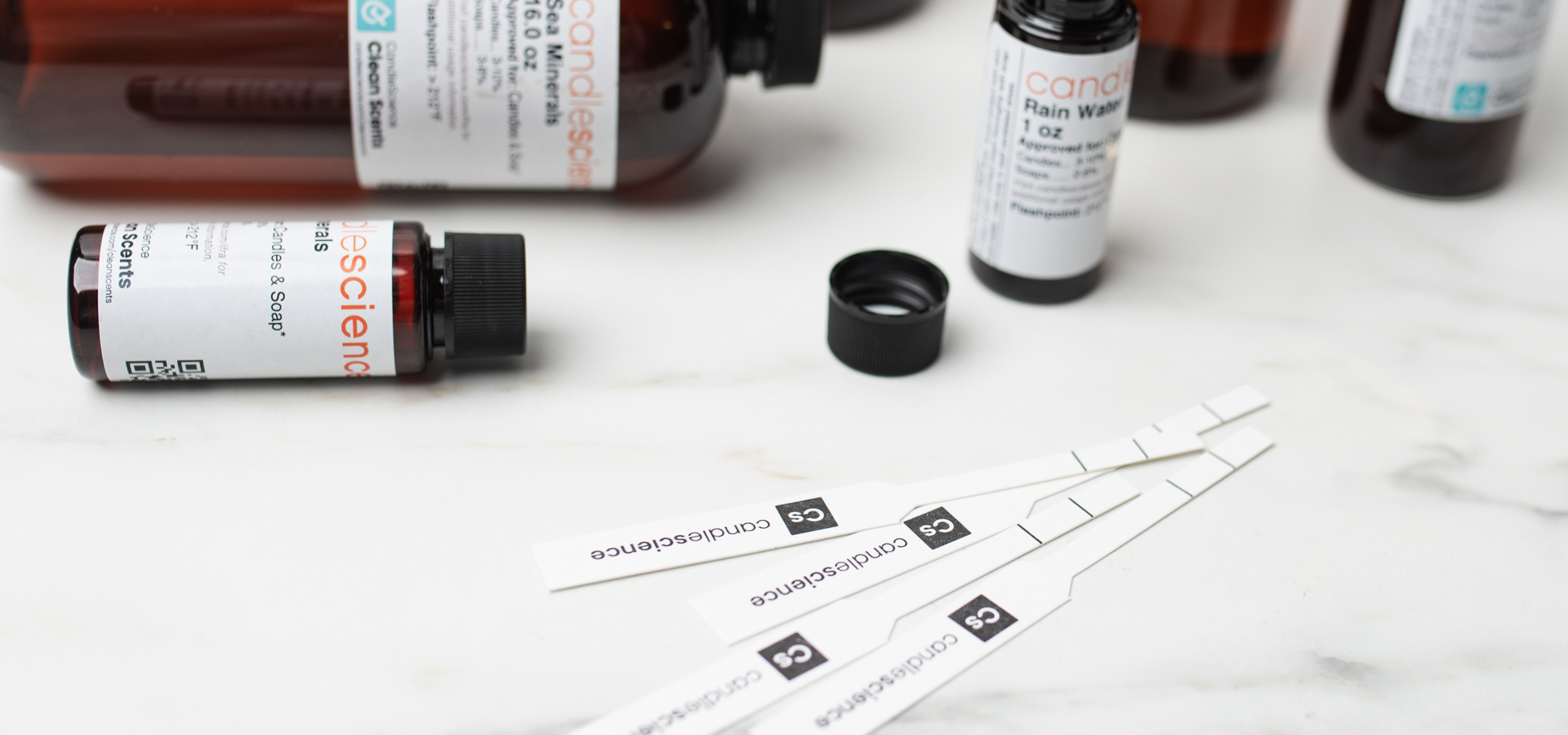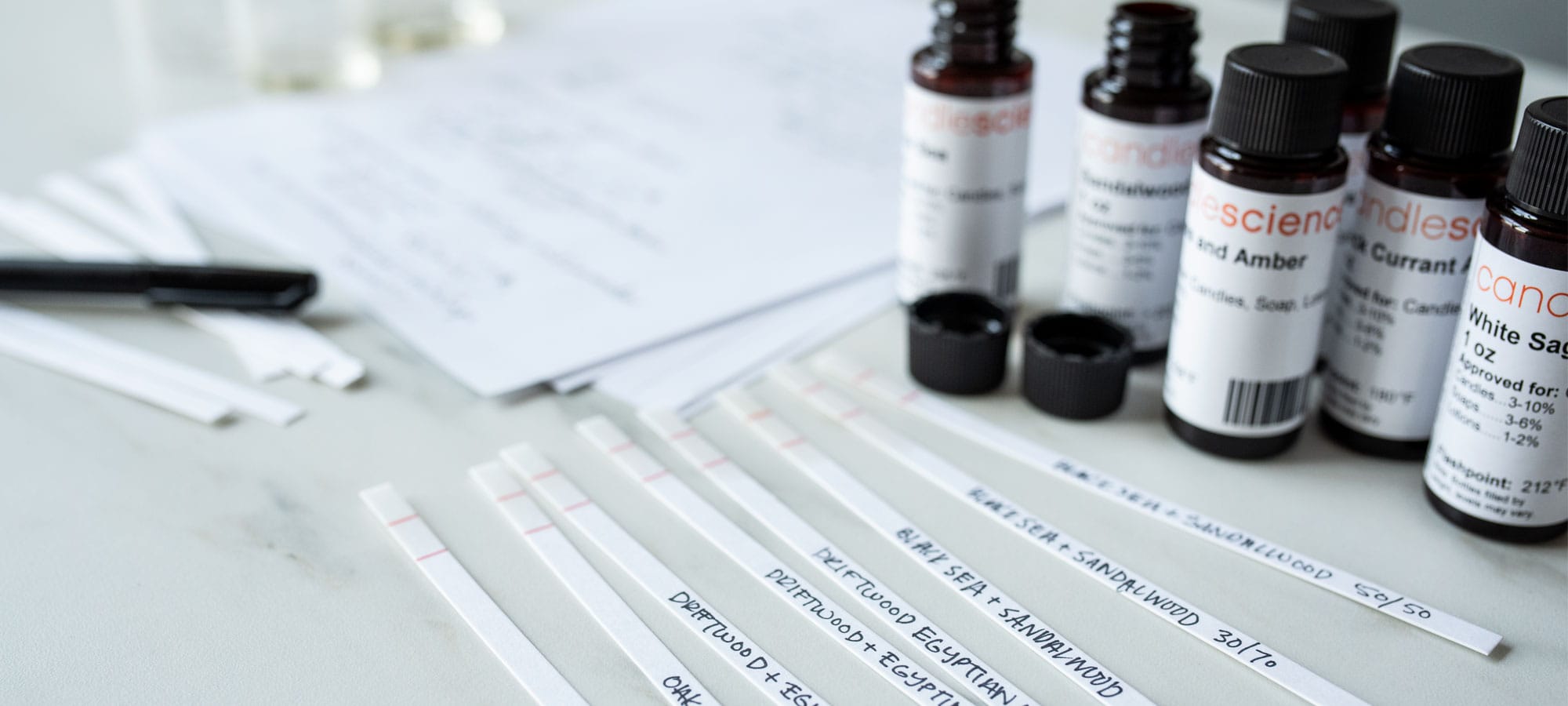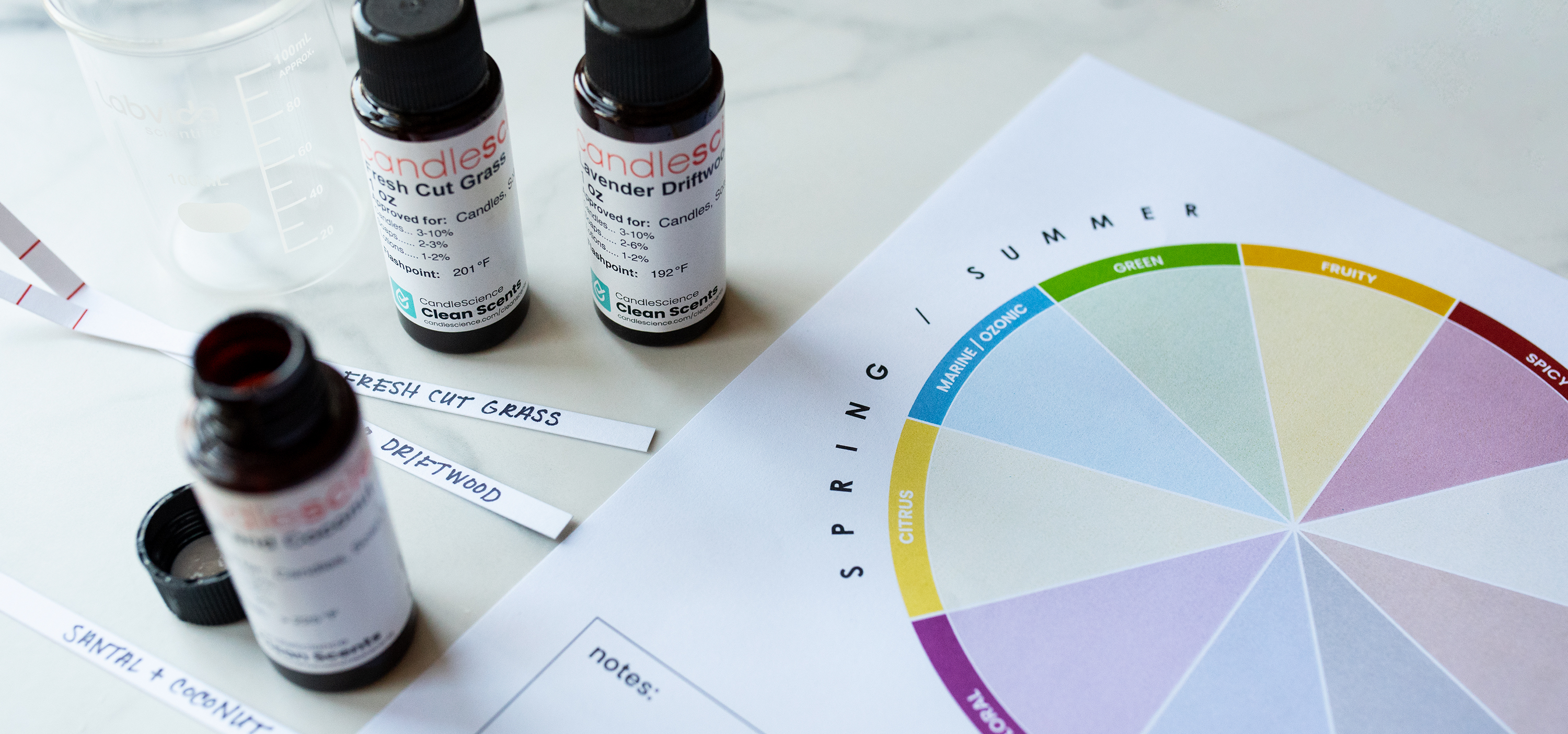Candle making 101: How to use blotter strips

Do blotters seem more like an accessory than a necessary tool for crafting with fragrance? These little strips of paper are more important than you might think.
When artists select supplies for their next creation, they need to envision them in their final creation. Just as paints in a tube look different on a canvas, fragrance oils in a bottle smell different in a final product.
Blotter strips allow us to envision how a fragrance will smell once it’s in our final creation, whether that’s a candle, soap, or other scented product. In this article, you’ll discover why blotter strips are a necessary tool for makers who craft with scent and how to use them.
What are blotter strips?
Blotter strips are small, absorbent strips of thick paper used to test and evaluate fragrances. They act as a neutral medium, allowing candle and soap makers to get an accurate sense of a scent.
While designs vary, most blotter strips are long and narrow so they can be easily dipped into fragrance oil bottles.
Why blotter strips are an essential tool for candle and soap makers
You cannot get an accurate impression of a fragrance oil by smelling it out of the bottle (OOB). Fragrance oils are comprised of top, middle, and base notes. Top notes evaporate the quickest, so they tend to dominate the scent profile during OOB impressions. The overwhelming top notes tend to mute middle and base notes, which can leave you with a skewed perception of the actual scent profile.
Blotter strips allow you to experience the full character of a fragrance oil, without needing to put it in wax, soap, or a base.
Get a truer picture of a scent’s character
To analyze a scent's true character, you need blotter strips. When you dip a blotter strip into a fragrance oil and allow it to dry down, the fragrance oil components evaporate in a more gradual manner, which allows for a more balanced impression of the scent profile.
Preview blend ideas
Blending multiple fragrance oils to create your own unique scent is such an exciting part of crafting with fragrance. But how do you decide which fragrances to blend, or the ideal ratio?
Blotter strips let you preview and adjust your blend ideas before you put those fragrances in candles or wax melts.
Compare similar scents
Blotter strips enable easy comparison between different fragrances, helping you discern subtle differences and preferences. If you’re trying to decide between two similar fragrances—or even two candidates for part of a blend—blotter strips make it possible for you to hone your vision and get exactly what you’re looking for.
Train your nose and deepen your understanding of fragrance
Your understanding of fragrance will naturally develop over time, but pairing blotter strips with a tool like the fragrance wheel is a great way to intentionally train your sense of smell.
Practicing this skill will help you to more easily identify notes and visualize where they fall on the fragrance wheel. As a result, you’ll deepen your understanding and experience of fragrance as a whole. Check out our fragrance wheel resource to learn more about training your nose.
How to use blotter strips
Now that you know why blotter strips are an essential tool for makers who work with fragrance, let’s review how to use them. Use one blotter strip for each fragrance and label each blotter with the fragrance name. Our fragrance blotter strips feature wide handles that make them easy to label and hold.
Dip, bend, let sit, sniff
- Dip the blotter strips into the bottle to the first line.
- Bend the tip of the blotter at the second line. This allows you to set the blotter down without compromising the scent or getting fragrance oil on your work surface.
- Let the blotter strips dry for around 10 seconds before smelling.
- Hold the blotter about an inch from your nose and smell to evaluate the fragrance oil.
Using blotter strips to test fragrance blends
- If you want to test how fragrances would smell when blended, use two blotter strips.
- For a 50/50 ratio, dip both blotter strips to the first line and hold them together while evaluating the scents. To represent a particular scent more strongly, dip that fragrance to the second line.
Compare similar scents with blotter strips
- Blotter strips come in handy when you’re having trouble deciding between two similar scents. Make sure you have a notebook handy to compare similar fragrances.
- Dip the same amount of each fragrance on its own blotter strip, then record your first thoughts when smelling the fragrances separately. In between sniffing the blotter strips, smell the inside of your arm or the “elbow pit” to give your nose a reset.
Make sure you're testing fragrances in an area where other odors don’t interfere. If you’ve recently cooked in your kitchen, for example, it might be best to wait for some time before testing fragrances or test them in an area where you can’t detect the aroma of food. Avoid wearing perfumes or scented body products while testing fragrances.
Final thoughts
Blotter strips provide a more accurate impression of fragrance oils because they give top, middle, and base notes time to bloom.
You can use blotter strips to get a more accurate impression of fragrances, plan unique blends, compare similar scents, and train your nose.
With blotter strips in your candle or soap making toolbox, you'll be prepared to try any new blend ideas that pop into your head—and feel more confident crafting with fragrance.
Additional fragrance oil evaluation resources
Ready to hone your scent skills? Bookmark these resources to deepen your understanding of fragrance.

Fragrance Oil Blending 101
With a bit of know-how and a little creativity, anyone can become a fragrance mixologist!

How to Evaluate Fragrance Oils
Learn how to evaluate fragrances like the pros.

The Fragrance Wheel: Notes, Families, and How To Use It
Understand the relationship between different olfactory categories.
Do you have any other questions about using blotter strips? Ask us below!